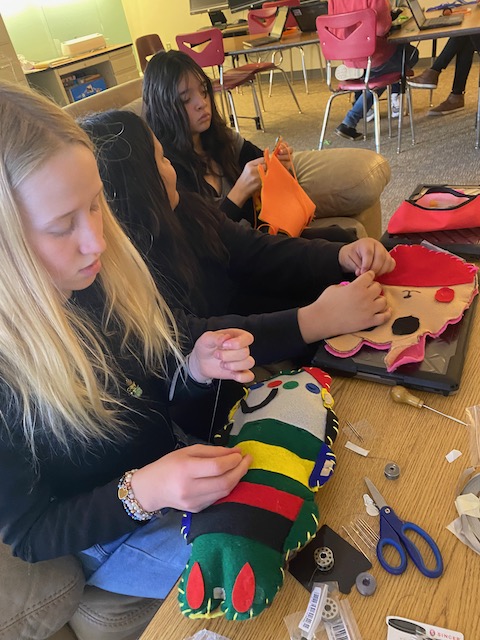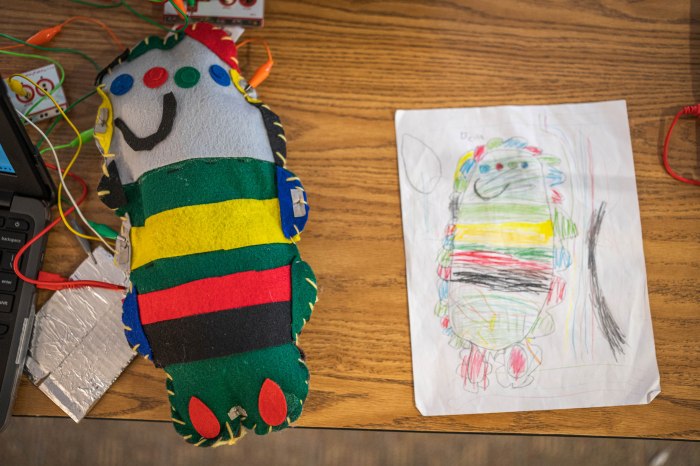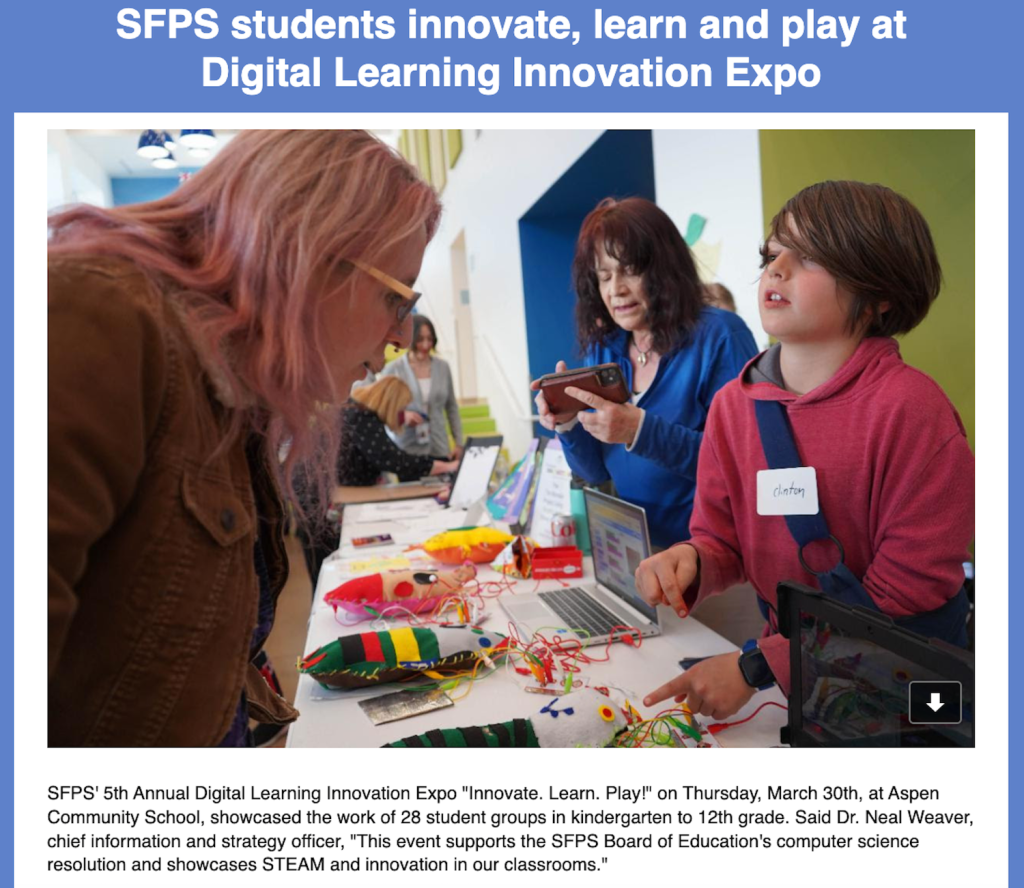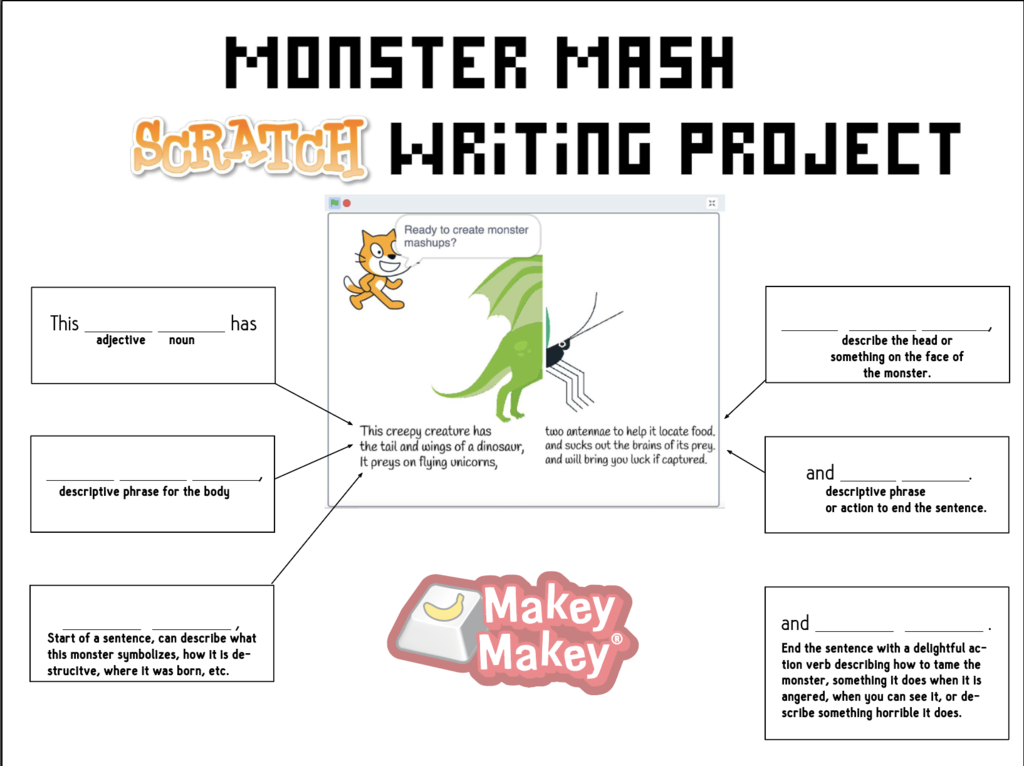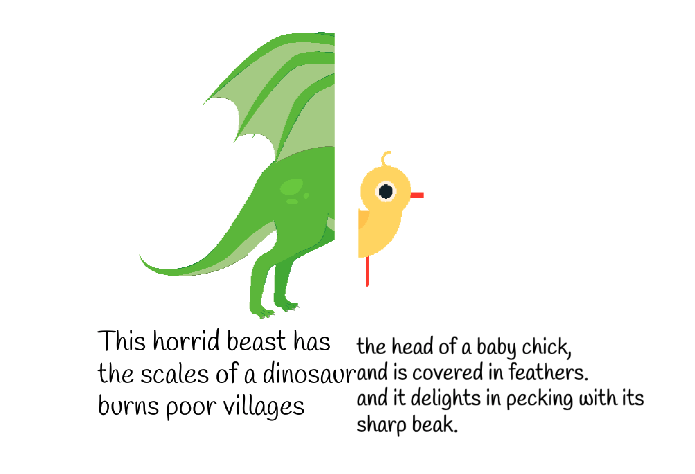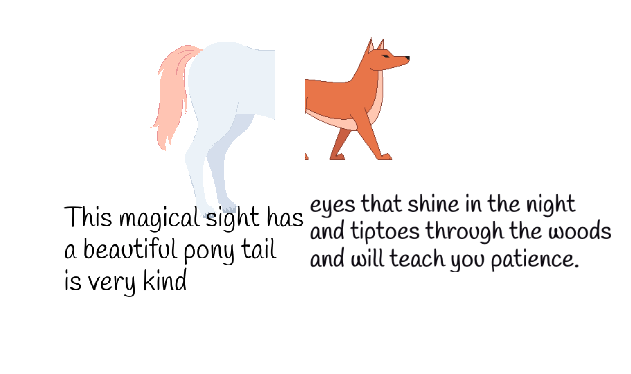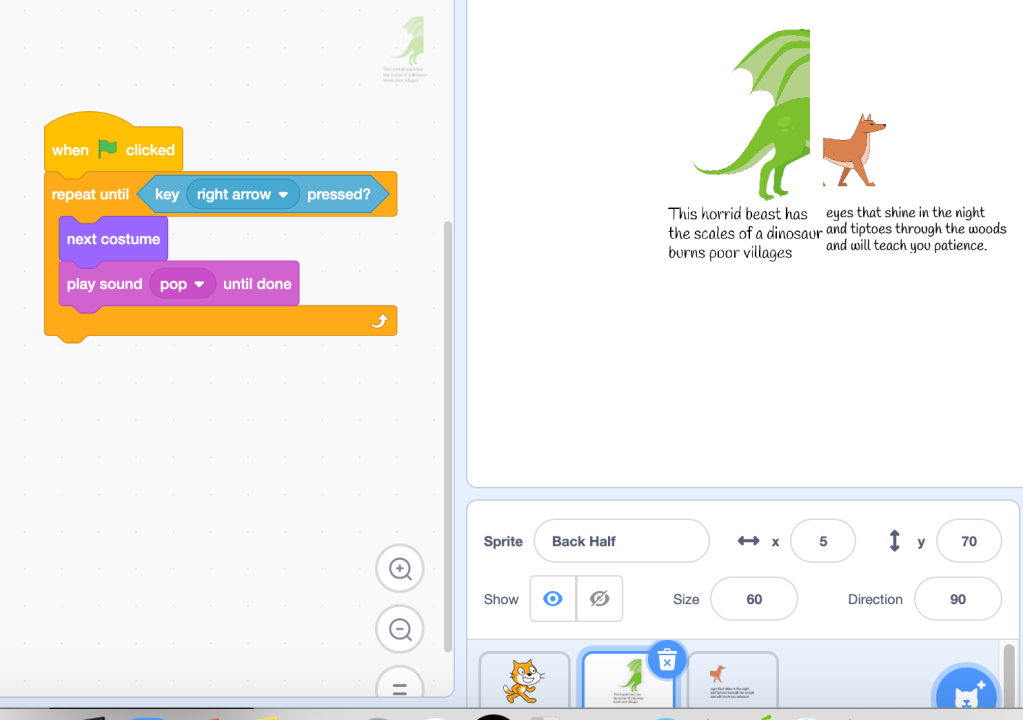Posts Tagged ‘Scratch Programming’
Monster Project Using Makey Makeys and Scratch
This project takes the Monster Project enhancing it with interactivity created through using Scratch and Makey Makeys. It was inspired by the Makey Makey Hack a Toy Lesson. Part of the lesson included the 5th graders interviewing 1st graders. This Edutopia article discussed the benefits of interviewing – Learning to Interview Builds a Range of Communication Skills.
Making the Monsters
A 1st grade teacher was asked to have her student draw monsters.

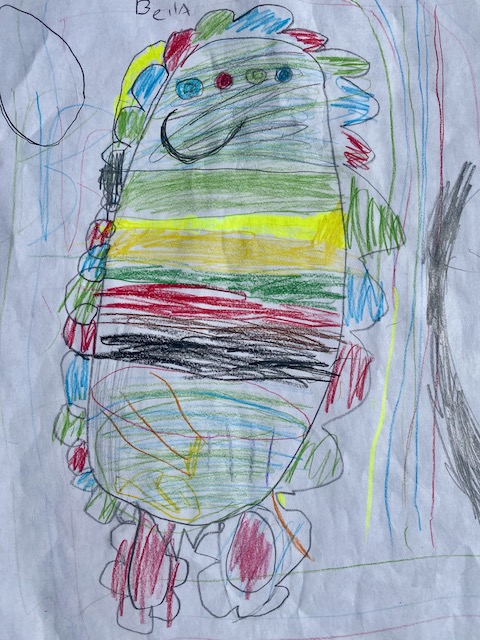
The 5th graders used felt to recreate the 1st graders’ drawing using felt. They were then sewn together with yarn and stuffed with filling.
Preparing the Plushy
The SAGE students created larger versions of the 1st graders’ drawn monsters through using felt pieces for the base and the features of the drawing, adding a back, sewing it today with yarn, and stuffing it
Interviewing the 1st Graders
The interview questions were developed by the SAGE students first by brainstorming ideas on the Promethean board, and second sharing them on a Google Doc so they each had a copy:
Interviews
The SAGE 5th graders interviewed the 1st graders about their Monsters using Vocaroo. It produces a MP3 file which is compatible with Scratch. This file is downloaded.
Preparing the Files in Scratch
The SAGE students then uploads their MP3 files into Scratch where it is edited into clips of sounds. This link gives some details how to do so https://helpkidscreate.com/adding-audio-to-scratch/.


See more of their code:
- Elizabeth – https://scratch.mit.edu/projects/793092586
- Tao – https://scratch.mit.edu/projects/811334666/
- Emily – https://scratch.mit.edu/projects/827406003
- Valerie – https://scratch.mit.edu/projects/796614386
- Emily (Spanish Version) – https://scratch.mit.edu/projects/830970807
After the 5th graders made the plushies, they prepared them to be connected to the Makey Makey by taping in conductive tape and sewing in conductive thread as described in https://makeymakey.com/blogs/how-to-instructions/maker-class-lesson-two-hack-a-toy


The Reveal to the 1st Graders
When all of the projects were complete, they were set up in our classroom and the 1st graders were brought in for the reveal.
Presenting Their Projects at Our Innovation Fair
Several SAGE students presented their Monster Projects at our district’s innovation fair.
Extra – Animated Drawings and Blabberize
As an extra project and to enable younger students to get more involved with the technology, the older students can help them animated their drawings using https://sketch.metademolab.com/:
which can then be uploaded to Canva to create a party of multiple monsters:
To learn how to do this, see the @theMerrillsEDU tutorial at https://youtu.be/JTukQCTj2fo?si=kdsM0vTyekRLFaRY
or Blabberize their monsters.
- http://blabberize.com/view/id/2165233
- http://blabberize.com/view/id/2165238?secret=f97ef182
- http://blabberize.com/view/id/2165250
- http://blabberize.com/view/id/2165249
- http://blabberize.com/view/id/2159218
Standards Addressed
CCSS – English Language Arts
- Interpret information presented in diverse media and formats (e.g., visually, quantitatively, orally) and explain how it contributes to a topic, text, or issue under study.
National Core Arts Standards
- Students will generate and conceptualize artistic ideas and work.
CSTA Standards
- Decompose (break down) problems into smaller, manageable subproblems to facilitate the program development process.
- Modify, remix, or incorporate portions of an existing program into one’s own work, to develop something new or add more advanced features.
ISTE Standards for Students
- Students create original works or responsibly repurpose or remix digital resources into new creations.
- Students publish or present content that customizes the message and medium for their intended audiences.
NAGC (National Association for Gifted Children) Standards
- Standard 1: Gifted individuals demonstrate skills, abilities, and potential commensurate with high performance.
- The project demonstrates the students’ advanced skills in creativity, problem-solving, and technical proficiency in programming and electronics.
- Standard 2: Gifted individuals demonstrate task commitment and perseverance to high-level work.
- The project showcases the students’ commitment and perseverance as they went through multiple stages, from creating stuffed animals to conducting interviews, programming, and connecting the Makey Makeys.
- Standard 3: Gifted individuals demonstrate creativity and risk-taking.
- The project involves the students’ creative thinking and risk-taking as they transformed the monster drawings into physical stuffed animals and integrated technology to make the interviews interactive.
- Standard 4: Gifted individuals demonstrate the ability to work both independently and within groups.
- The project required the students to collaborate within their group to complete different aspects, such as designing the stuffed animals, conducting interviews, programming in Scratch, and connecting the Makey Makeys.
- Standard 5: Gifted individuals demonstrate effective communication skills.
- The students exercised their communication skills during the interviews with the 1st graders and also used technology to convey their messages through the Scratch programming language and the Makey Makey connections.
- Standard 8: Gifted individuals demonstrate sensitivity to their own and others’ well-being.
- The project fostered empathy and awareness as the older students interacted with the 1st graders and translated their drawings into tangible stuffed animals, providing a sense of validation and pride for the younger children
Scratch Monster Mash Up: A Language Arts/Technology Project
This project was developed by Colleen Graves. I found information about how to do it at the Makey Makey blog post entitled, Scratch Coding Literacy Project Ideas for Makey Makey micro:bit Inventions. She designed it to be used with Scratch programming and the micro:bit micro-controller. I asked my students to create their monster mash ups using only Scratch programming. Scratch programming permits remixing of projects. I gave my learners a version of the project Colleen Graves shared so that they could remix hers and concentrate on creating their creatures and the accompanying text.
Standards Addressed
- CCSS.ELA-LITERACY.W.5.3
- Write narratives to develop real or imagined experiences or events using effective technique, descriptive details, and clear event sequences.
ISTE Standards for Students
- Students create original works or responsibly repurpose or remix digital resources into new creations.
- Students publish or present content that customizes the message and medium for their intended audiences.
Introduction
Students are shown and explore the book. Myth Match: A Fantastical Flipbook of Extraordinary Beasts. “ou might have heard of the unicorn and the griffin, but what about the unifin? This fantastical flipbook collects together magical and mythical creatures from all over the world, then lets you mix and match their fronts and backs to create even more wondrous beasts of your own!” See the video below for some examples from this book.
Main Activity: Creating Monster Mash Ups in Scratch Programming
Specific directions as to how to do this can be found in Colleen Grave’s blogpost, Scratch Coding Literacy Project Ideas for Makey Makey micro:bit Inventions. Below are some artifacts for this project.
The Template for the Writing Part
Some Examples of Monster Mash Ups Created in Scratch
A Finished Scratch Example (click on the image or the link below it)



